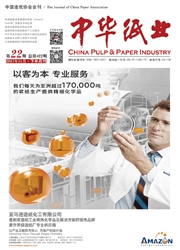

 中文摘要:
中文摘要:
在机械浆的碱性H2O2漂白过程中,会产生一定量的溶解与胶体物质(Dissolved and Colloidzl Substznces,简称DCS)。本文利用不同的分析手段(阳电荷需求量和UV吸收)研究了杨木CTMP碱性H2O2漂白过程中漂白工艺对DCS溶出及纸页性能的影响。结果表明:N2OH用量的增加以及温度升高能够促进较多DCS溶出。较高NaOH用量下,H2O2用量增加导致DCS中较多氧化木素溶出。一定温度下,延长漂白时间,也能导致较多的DCS溶出。同时,DCS的溶出有利于提高纸页白度和抗张强度。
 英文摘要:
英文摘要:
Some dissolved and colloidal substances(DCS) tend to be released during the alkline hydrogen proxide bleaching of mechanical pulp. Several analytical methods including cationic demand and UV absorbance were used to study the effect of bleaching parameters on the release of dissolved and colloidal substances and properties of paper. The results indicated that the amount of DCS dessolved can increase as the increase of NaOH dosage and temperature rising. The increase of H2O2 dosage resulted in the release of more oxidized lignin at higher dosage of NaOH and more DCS released with the rise of temperature. Meanwhile, prolonging of bleaching time also resulted in more DCS release and higher brightness and improved breaking length.
 同期刊论文项目
同期刊论文项目
 同项目期刊论文
同项目期刊论文
 期刊信息
期刊信息
